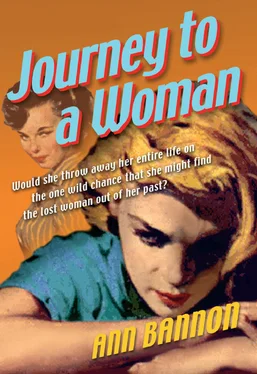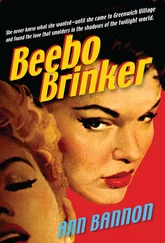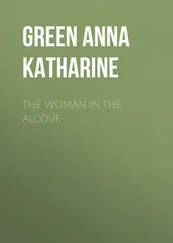There was a woman living near me in Southern California who served as the original of Vega Purvis. She was handsome, sleek and chic, witty, and, in Edward Arlington Robinson’s apposite phrase, “imperially slim.” She could be endearingly funny about her physical ills, in a way that made you want to cuddle and comfort her. It was Vega herself who described her abdominal scars as resembling a ball of yarn tangled up by a kitten. But she carried a freight load of psychological damage everywhere with her, and it gave her a mercurial temperament. I could never wait to spend time with her, and never wait to get away home.
My fictional Vega was also a woman whose prejudices reflected almost perfectly those of her homophobic family, and yet who broke out of that box from time to time. Her forays were thrilling, risky, and ultimately disastrous, as Beth discovered. But they do bespeak the strength of that drive to find and possess and yes, love, one of your own. And always, in that era and even now, there were perplexed and resistant men hovering in the background—impatient husbands or brothers or uncles, wondering why their influence doesn’t sweep away such treacherous notions from their women’s heads.
Some women take refuge behind a man, as Laura did, and some men behind a woman, as did Jack Mann in this tale. Laura never gave up her delight in women, and they remained the romantic joy of her life. But she wanted children and so did her supportive and affectionate best gay friend, Jack. They made common cause to provide a home for their child and a facade of respectability each for the other, a sort of honorable camouflage to shield them from the ostracism of their social circle.
Knowing none of this, and running almost as much from Vega as Charlie, Beth arrives in New York obsessed with tracking Laura to earth and virtually devouring her with the resurgent sexual excitement she thought she had forever abandoned with her marriage. And when, in her search, she runs into the provocative and manipulative writer, Nina Spicer, who leads her to Beebo Brinker, the stage is set for a fiery intersection of different personalities, conflicts, and clashing needs. And ultimately, of course, for resolution in love. (These were the pulps, after all!)
So many of us in that tough age, whatever our social class, grew up thinking we had to be what our parents and society told us to be: “nice girls,” “good girls.” We had no notion that we could give ourselves permission to “transgress.” Yes, there was too much booze and too much angst. But you know what? We romanticized it all. We really thought that since we couldn’t give ourselves permission to be who we were, the liquor could. At the very least, it relaxed the strictures against marginalized social roles. It let us look at and think about the women we suspected we might truly be with affection, not socially mandated contempt. It was a conspiratorial act when a bunch of handsome, adventurous young women sat down to share a beer and cigarettes. But more than that, we were carrying a flag handed off from our mothers, both straight and gay, claiming autonomy and equality for women. That’s what made the brew and the smokes so appealing. They had a significance for us beyond the mere conviviality they fostered.
Those of us who were young in the 1950s and 1960s have bright memories of mothers who, in their turn, were the “flappers” of the 1920s: the pert girls in the cloche hats, growing up in a prosperous era, flattening their breasts, wearing their hair in “boyish bobs,” and raising their skirts above their knees. The Great War to end all wars was over and the world was throwing a decade-long party. For the first time, women were starting to claim the theretofore masculine privileges of smoking and drinking. It was a way of demanding parity with men, of trying to be taken seriously by donning the trappings of the ruling class. Many of them were playing at this game, but a significant few took it seriously.
And the new advertisements were seductive. A man lights a Chesterfield and his woman companion gazes into the curling smoke. “Blow some my way,” she says. Murad brand, with a not very subtle nod to the ladies, adopts the slogan, “Be Nonchalant—light a Murad.” And here’s the one that got so many women: “Reach for a Lucky instead of a sweet.”
But shockingly, the Great War and the Great Prosperity were followed by the Great Depression. Women were thrust back into their traditional routines of kinder, küche, kirche . In their millions, they broke out the white ruffled aprons and little wash dresses and rediscovered the joys of floor wax and tuna casseroles. Still, they could not forget the brief, exhilarating fling with freedom of a sort. When Prohibition ended in the early 1930s, many young women participated enthusiastically in the afternoon “cocktail hour,” which seems to have entirely replaced the hour for high tea. One expanded one’s wardrobe to include a semi-formal outfit for late afternoons that became known as a “cocktail dress.” That useful article of furniture, the once-and-future “coffee table,” became the “cocktail table.” Fashionable young women drank highballs or bourbon on the rocks, right alongside their mates.
If the men bought the booze, women could share a “wee drop of the creature,” too. My own mother, preparing for her second wedding in 1934, was given that trendiest of bridal parties, a “liquor shower,” including highball glasses, engraved pewter liquor labels on little chains, glass swizzle sticks, and her own personal hammered silver flask, in case she got chilly at a football game. It was the height of young, trendy 1930s urbanity, in the grand style of the charmingly bibulous Nick and Nora Charles—“The Thin Man” and his delectable mate.
When World War II intruded on our lives, for many women, and aside from genuine hardships and losses, it truly was a glimpse of a brave new world. They came out of that experience more changed than the surface serenity and convention of the 1950s would suggest. Cigarettes and liquor had been offered everywhere and to everyone during the war; they were blended in the memory with recreation, rest, relief from stress and fatigue, and just plain fun. Freedom to smoke and drink without the intermediary of a protective male became associated at last, for better or for worse, with a defiance of past constraints on women’s lives. It became, in short, an outward show of independence.
When I arrived in Greenwich Village in the late 1950s, this perception was firmly entrenched and I did not think to question it. There were wonderful women everywhere I looked, and many intriguing gay men. When they gathered to socialize at a Village pub, they enjoyed a smoke, they took a drink, they created a charmed circle. If you wanted to join them, to fit in, you did as they did. If you went a little over the top, they picked you up, dusted you off, spared you the sermons, and took you home to sleep it off on their sofas. You, in time, returned the favor as needed. It was another form of bonding, of “us against the world.”
But a time does come in one’s life when it is prudent to step back from all that seemed fully pellucid in the first enchantment of one’s twenties; a time to take stock and a time to question. I am reminded of Max Ehrmann’s wise and compelling advice: “Take kindly the counsel of the years, gracefully surrendering the things of youth.” (“Desiderata,” 1927). I did, as in good time and with luck, we all must. Finally, for all those who press reproach without understanding, this is just to say how it was for so many of us back then.
No, I didn’t become an alcoholic. I even stopped smoking in my early twenties and today drink only the occasional, if welcome, glass of wine. And I can reassure you that Beebo and Beth, at the end of Journey to a Woman , made it out happy and intact. How do I know this? Because I know where they are now: sitting on the pages of a manuscript written some years ago and awaiting resurrection and revision. Beth went through a sort of fever dream in extricating herself from her marriage and fashioning a life for herself that differed greatly from the one imagined by a younger Beth in her undergraduate days. It’s often in such a fire that we forge and purify our true identities, and that’s what her journey was all about. Parts of the personal odyssey are daunting and parts of it are brilliantly beautiful, and both reveal us to ourselves as no other experience could. Not everyone has the stomach to take this sort of interior trip. If it were easy, wouldn’t everyone do it? But for survivors, it brings the gift of deeper self-knowledge and a capacity for sweeter and more selfless love of others.
Читать дальше












